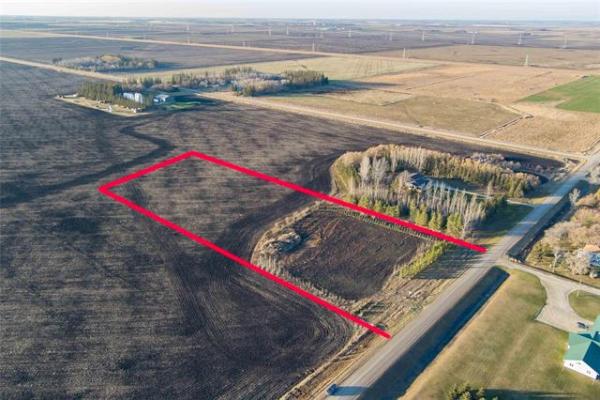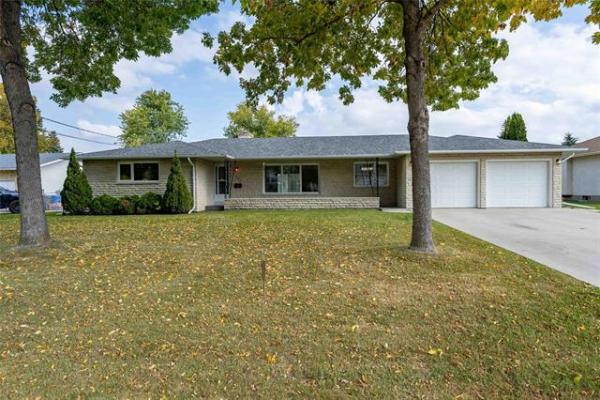QUESTION: On one side of our property, the neighbour's house is nine feet from ours, directly south. The space in between our houses is effectively useless. The area is quite warm, as the sun does shine here very strong throughout the day and reflects off the white stucco walls. Over the years, I have been keeping the grade raised so that any water runs away from the house. But I was thinking this might, in fact, be a great location for a long, slim, raised garden about 20 feet by two by one-foot high. I have a rain barrel nearby and could install a slow-drop irrigation system for watering. Is this a bad idea?
ANSWER: You have raised a couple of interesting points that I am quite passionate about -- gardens and rain barrels. There is no reason not to grow a small garden in the location you have mentioned, and I would strongly encourage you to do so as long as you observe a few simple precautions.
I am a huge fan of homeowners growing their own produce and herbs, especially in our often crowded urban environment. My own vegetable garden is a constant source of joy, and sometimes grief, from May until October. There is nothing more rewarding than walking into your backyard barefoot on a hot summer day and picking a few items to add to a salad or to throw in the steamer. Anyone who has tasted a tomato picked fresh from the vine will have a hard time stomaching the rock-hard and tasteless imitation sold at the local grocery store. While you may have limited space to grow more than a few different selections, using this area for your intended purpose will be fine.
The main concern with having gardens, or any vegetation, right up against the home is moisture. Just as was highlighted in several of my previous articles, care should be taken to try and shed water away from the foundation in this area to prevent seepage. It seems like a contradiction to say a garden is OK against your house when it needs constant watering, but let me end the confusion. We should always try and maintain a moderate amount of moisture in the soil around our homes. Too wet is not good, but too dry can be just as detrimental. As many homeowners experienced in last summer's extremely dry weather, the soil can shrink considerably if we let it dry out too much. Many people saw large gaps develop between the foundation walls and the soil, as well as sunken sidewalks and driveways, because of this soil shrinkage. This phenomenon can also lead to moisture intrusion once heavy rains finally arrive, due to the missing soil in these areas.
Having a small garden beside your home, whether it is vegetables, berries or flowers, will allow you to properly monitor and regulate the soil moisture. If there is a lot of rain, like this past spring, no additional watering will be needed. As the weather warms and the often hot, dry summer days begin, regular watering can begin. The benefit of the garden is that it will give you a reminder to check this area regularly to ensure the soil is properly hydrated, but not swimming. If the plants are withering, add water. If the plants are rotting or develop fungus or other diseases, you are over-saturating the soil.
The next suggestion of yours, using rainwater from the eavestrough system for watering the small garden, is an excellent one. Collecting in a rain barrel the summer precipitation that falls on the roof of your home is one of the greenest initiatives you can have. Firstly, the water is well-oxygenated and will be ideal for use in replenishing lost soil moisture. Secondly, tap water in our area is quite high-quality but is also is treated with chlorine and fluoride for health reasons. These chemicals are not normally present in rainwater, making the water from the barrel better for your plants. Finally, it will save you money and also help preserve our natural water source for the future. Your plan to use a slow-drip irrigation hose attached to the rain barrel may work, but you might be better off without it.
Like your intended method, the first couple of years that I collected eavestrough water for my garden, I had it connected to a slow-drip hose for constant irrigation. While I thought this was a good way to prevent the barrel from overflowing as well as save me time in regular watering, it didn't quite work out that way. The problem with that idea is there is not always enough pressure from the water leaving your rain barrel unless you elevate it quite high. Many drip hoses are designed to work well with the pressure generated from a lawn faucet, so the water in the hose is forced out of tiny holes. My experience was that the first section of the drip hose worked well most of the time, while the farther sections from the rain barrel barely dripped. This changed somewhat during heavy rains when there was added pressure in the tank, but was not very reliable. Also, the hose could get partially plugged by debris that washes into the rain barrel from the downspouts, which can be difficult to completely prevent.
You are to be highly commended for wanting to grow your own produce in the small area of land where this will work in your yard and provide some natural irrigation, but care must be taken not to overdo it. Some plants, such as tomatoes, will thrive in the very sunny location, but you must constantly monitor the soil moisture in this area to ensure you prevent over- or under-watering. An easy way to do this is to use a large watering can that can be filled from the spout of the rain barrel, which will also allow you to frequently ensure proper hydration of the soil is accomplished.
Ari Marantz is the owner of Trained Eye Home Inspection Ltd. and the president of the Canadian Association of Home & Property Inspectors - Manitoba (www.cahpi.mb.ca). Questions can be emailed to the address below. Ari can be reached at (204) 291-5358, or check out his website at www.trainedeye.ca
trainedeye@iname.com



